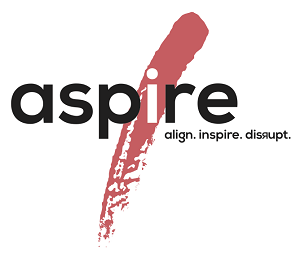
1. BUILD YOUR ANNUAL STRATEGIC PLAN
- Include as many of your leaders, supervisors and up-and-comers as possible in your planning process.
- Don’t worry about tactics until you have the strategic direction defined. Many people think tactically. Tactics are only effective if you have the right strategies. Strategies answer the question “what will we do?"
- First, think about "what" (the key strategies).
- Then ask, "how can we be disruptive?"
The strategic direction should be defined by your entire senior leadership and key department heads team. Take a strategic look at these 7 places:
- Guest experience
- Associate / Team Member journey
- Retention strategy
- Brand optimization
- Customer development targets
- Ownership expectations and alignment.
- Business Practices: Process improvement & productivity optimization
2. THINK TOGETHER. Meet offsite with your leadership team to discuss current results and indicators. Open with the question: “If we could do anything to quantum leap our market share, revenues and/or profitability, what would we do?”
3. THINK OPENLY. Begin your plan with a concentrated review of your Vision, Mission and Brand Strategy. Ask how to expand your imprint and strengthen your point(s) of differentiation. It leads to innovation.
4. BE A CHANGE INSTIGATOR. Identify what must change, what needs to change and what obstacles you need to remove in order to make those changes effective.
5. CANI (Constant and Never-Ending Improvement). Review your meetings, meeting agendas and outcomes. Look for redundancy. Tie meetings into improv- ing processes, optimizing time and maximizing productivity.
6. ASK. What are your operational improvement areas?
7. REVIEW FEEDBACK. What does your social media tell you about your operation that you need to change, enhance or leverage?
8. WHO ARE YOUR BEST CUSTOMERS? How do they think? How do they prefer to buy? Who else thinks and acts like them?
9. REFLECT. What does distribution look like today? What is the optimal distribution approach? How can you improve margins through shifting your channels?
10. FINISH THIS SENTENCE: “People love hanging with us because…” What is the narrative you want to create and be known for?
11. HOW ENGAGED ARE YOUR PEOPLE? Are they “all in”? How competent are they? What training needs refreshing (minimum every 2 years) and what training needs to be developed? You should have something new every year to keep your people learning and your guest experience evolving.
12. GRADE YOUR TALENT ON A SCALE OF 1-10. Everyone. Where are you strong? Where are you weak? What are you going to do about it? Look at the 3 indicators of high performance:
- Head in the game – How is their attitude? Attitude has a 68% impact on performance
- Skill levels – Do they know how to do the job functions?
- Process capabilities – Do they us the processes in place to ensure consistency and sustainability around their work product?
13. HOW CAN YOU REFRESH YOUR SERVICE? What is special about the experience? Find your signature.
14. EXAMINE. What are your opportunities to leverage pre-arrival wallet share capture?
15. REVIEW YOUR FIRST IMPRESSION TOUCH POINTS. What enhancements do you need to make? Consider your arrival experience, website, front door, parking lots, hallways, elevators, etc.
16. WHAT IS YOUR DEPARTURE EXPERIENCE LIKE? Ensure it makes every customer say, “I really love this place!”
17. BUILD YOUR SALES & MARKETING PLAN
- Ask the team to explore: “How will we stand out from the clutter as a brand?” Your entire leadership team should spend 4 hours on how to strengthen your brand, market position and customer retention. Every leader/discipline manager should participate in your sales and marketing plan if you want everyone to be a “sales person”.
- Do not click [file/save as] when building your sales and marketing plan. Rethink your entire plan approach. Make it into one page. Then…
- Develop a one page sales/marketing plan for:
- Each sales person
- Each revenue department
- Each marketing key focus area
Think and prepare before you move. Planning is a thinking process. It requires quiet space and time — as many as 50 to 100 hours — to develop a truly well designed plan. We call the process TPM™…Think. Prepare. Move. If you think and prepare first, when it is time to Move, you move better, smarter and faster.
Need some help facilitating your annual retreat? Want help thinking differently about your business and how you will drive stronger results through strategy in 2017? Email [email protected].
CLICK to access 10 more things to do in preparation for 2017


